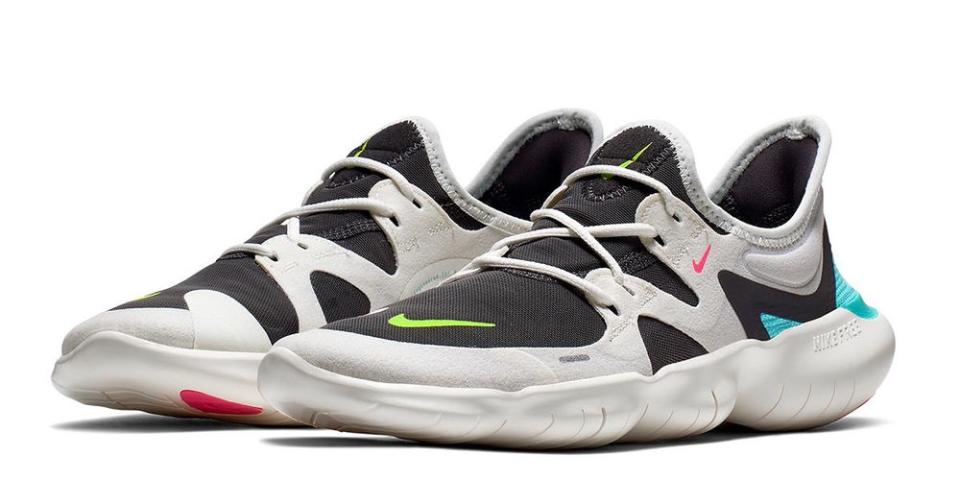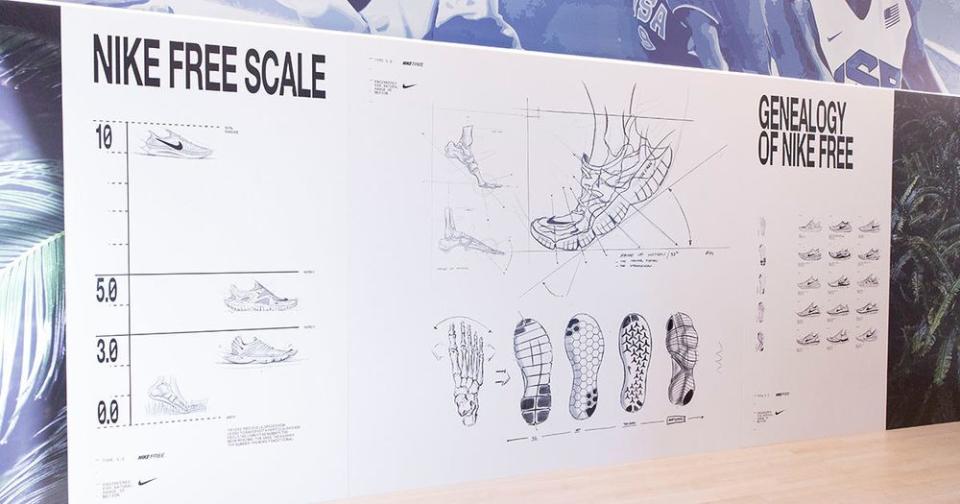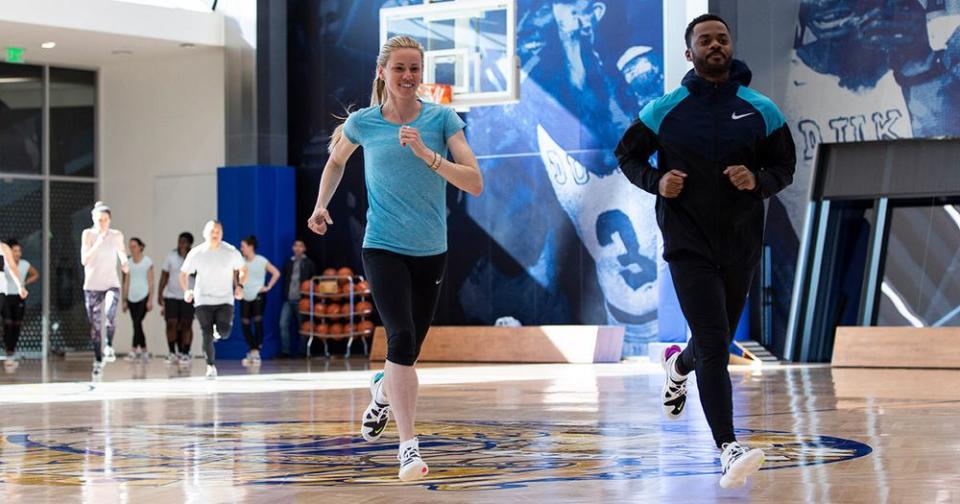The New Nike Free RN 5.0 Shoes Will Make You Feel Like You're Running Barefoot
Photos: Nike

Barefoot running or training in minimal footwear isn’t a new approach—and it's not without its share of controversy. One of the biggest misconceptions? Transitioning to this style of shoe will address all of your running needs (and fix any stubborn aches and pains) right away. Not quite. But with the launch of the Nike Free RN 5.0, the latest iteration from the Nike Free line, your fall marathon training might get more grounded, literally.
With the Nike Free RN 5.0, the team of designers reduced the amount of cushion that was used in earlier models to better connect your feet to the ground for enhanced foot proprioception (awareness of position and movement). The latest variation of the Nike Free is 26 percent more flexible and 2mm closer to the ground in order to closely imitate a barefoot feeling, according to a Nike News release. With these changes, your foot is able to move more freely through its natural range of motion, which can ultimately increase your foot strength.
If closer foot-to-ground contact sounds brutal, that's NBD. Nike didn't design the new kicks to be your go-to for daily runs; instead, they're supposed to be worn for strides, minimal miles, and even strength training. To shed more insight on the motivation behind the redesign (and other top-secret running things coming soon!) Nike Running held a two-day conference where some of the brand’s top footwear designers and pro runners talked about the latest updates to the Free line and what it means for us regular run-fanatics. (Related: The 2019 Shape Shoe Awards Have a Pair for Every Occasion)
“Free your foot, free your mind,” suggested Tobie Hatfield, athlete innovation director at Nike. As one of the most influential athletic footwear designers in the game, Hatfield broke down the benefits of interspersing barefoot training or using minimal footwear for both seasoned and newbie runners. For one, it helps you strengthen neuromuscular pathways (the way your brain tells your body to move) to increase muscular activation and efficiency, he says.

Why It's Worth Adding to Your Sneaker Collection
Hatfield said that runners—like well-equipped technicians—should have a variety of footwear options in their training tool kits. He also described the perks of occasionally ditching the extra cushion and structure found in kicks used for your longest runs. (Related: Should You Wear Minimalist Running Shoes?)
“Strength, consistency, and variability in training are the bread-and-butter of keeping aches and pains at bay,” agrees Blake Dircksen, D.P.T., C.S.C.S., physical therapist at Bespoke Treatments and founder of Nightcap Training, a holistic running program that incorporates training, nutrition, and injury and health management. “Barefoot running can prove a great training practice when dosed properly. When we run barefoot or in a minimal shoe, your body innately alters the mechanics to a more muscular- and tendon-loading strategy, rather than a bony strategy often seen with your typical, heavier trainers. Meaning, you use a greater deal of foot and lower extremity muscles to absorb the load and rely less on the bones and joints.”
The Nike designers admitted that more recent models of the Nike Free line strayed from the initial purpose and motivation of the shoe, so they refocused efforts on that original mission: to ground the athlete for reinforced natural movement patterns of the foot. Simultaneously, the design aims to strengthen key stabilizing muscles, which can get a little lazy after relying on overly cushioned footwear. In the newest models, minimal foam cushion work to enhance your ground-foot reaction. (Related: How Your Ankles Can Affect the Rest of Your Body)
And while extra cushion can be super helpful for long runs or recovery jaunts, it can also lead to an exaggerated heel strike. Kicks like the Nike Free RN 5.0 (Buy It, $100, nike.com) can supplement training to improve running gait efficiency in these cases, which can lead to faster paces. "Landing with a heel strike is possible when there's a big cushion to absorb the shock," says Dircksen. "When that cushion is taken away, the force is too much for your naked heel to handle, so you'll likely adjust your mechanics due to the lack of plantar protection. When barefoot, athletes generally demonstrate more of a mid-foot or forefoot strike pattern, greater muscle activation of the smaller foot muscles, reduced stride length, and increased stride frequency."
How Pros Train In the Nike Free—and How You Should
That all sounds amazing, but be sure to go easy when first incorporating them into your weekly training. Looking for some inspo? Some of the ladies of the Bowerman Track Club—aka the Bowerman babes, a badass training squad that touts members like U.S. Olympian and 2017 New York City Marathon winner Shalane Flanagan and 2016 Olympic triathlon gold medalist Gwen Jorgensen—have already started to fold the new Nike Free's into some of their workouts. (Related: How NYC Marathon Champion Shalane Flanagan Trains for Race Day, Plus Tips You Can Steal)

So how should you train in these types of shoes? Dircksen recommends adding them into your rotation slowly by wearing them to supplement your training. “Living your whole life in shoes and expecting to crank miles barefoot is a good recipe for injury," he says. "Start slow, maybe four to 10 light strides, or six minutes of a one-minute run, one-minute walk program and build from there.”
You might also want to take it a week at a time, beginning with around one to three miles for the first week, depending on how much you've used similar shoes in the past, your injury history, and current mileage—and only upping your distance by a mile or two (max) for the second week and so on.
Looks like it’s time to kick off (or on?!) your shoes to take your training to the next level.
You can be the new Nike Free RN 5.0 on nike.com.

